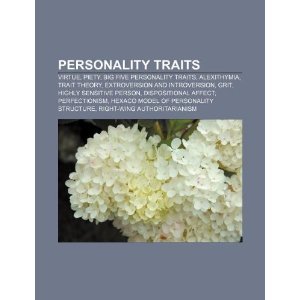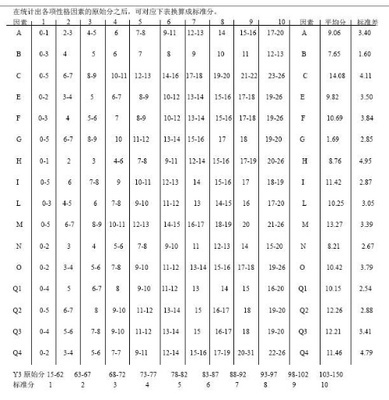In contemporary psychology, the "Big Five"factors of personality are five broad domains or dimensions ofpersonality that are used to describe human personality[,pə:sə'næliti].
The Big Five framework ['freimwə:k]结构 ofpersonality traits from Costa & McCrae, 1992 hasemerged as a robust [rəu'bʌst]健全的 model for understanding therelationship between personality and various academic behaviors TheBig Five factors are openness, conscientiousness[,kɔnʃi'enʃəsnis]严肃, extraversion [,ekstrə'və:ʃən], agreeableness[ə'griəblnəs]一致, and neuroticism神经质 (common acronyms['ækrənim]首字母缩略字 are OCEAN).
Conscientiousness is exemplified[ig'zemplifai]示例 by being disciplined ['disiplind]遵守纪律的, organized['ɔ:gənaizd]有组织的, and achievement-oriented['ɔ:rientid]以…为目标的.
Neuroticism refers to degree of emotionalstability [stə'biliti]稳定性, impulse ['impʌls]冲动 control, and anxiety[æŋ'zaiəti]焦虑.
Extraversion is displayed through a higherdegree of sociability [,səuʃə'biliti]社交能力, assertiveness[ə'sə:tivnis]魄力, and talkativeness['tɔ:kətivnis]表达.
Openness is reflected in a strongintellectual curiosity and a preference['prefərəns]偏爱for novelty['nɔvəlti]新事物 and variety [və'raiəti]变化.
Finally, agreeableness refers to beinghelpful, cooperative, and sympathetic towardsothers.
There is some evidence that personality andmotivation [,məuti'veiʃən]动机 are intricately ['intrəkitli]复杂的 tiedwith individual differences in learning styles, and it isrecommended that educators go beyond the current emphasis['emfəsis]重点 on cognition [kɔg'niʃən]认知 and include these variablesin understanding academic behavior. The neuroticism factor issometimes referred by its low pole – "emotional stability". Somedisagreement remains about how to interpret the openness factor,which is sometimes called "intellect" rather than openness toexperience. Beneath each factor, a cluster of ['klʌstə]束 correlatedspecific traits are found; for example, extraversion includes suchrelated qualities as gregariousness, assertiveness, excitementseeking, warmth [wɔ:mθ]热情, activity and positiveemotions.
The Five Factor Model is a descriptive[di'skriptiv]描述的 model of personality; psychologists have developeda number of theories to account for解释;证明 the BigFive.

The Big Five factors and their constituent[kən'stitjuənt]成分;组成的 traits can be summarized as(OCEAN):
Openness to experience – (inventive/curiousvs. consistent [kən'sistənt]始终如一的 /cautious ['kɔ:ʃəs]谨慎的).Appreciation [ə,pri:ʃi'eiʃən]欣赏 for art, emotion, adventure,unusual ideas, curiosity, and variety [və'raiəti] ofexperience.
Conscientiousness – (efficient/organizedvs. easy-going/careless). A tendency to show self-discipline, actdutifully, and aim for achievement; planned rather than spontaneous[spɔn'teiniəs]自发的 behavior.
Extraversion – (outgoing/energetic vs.solitary ['sɔlitəri]单独的/reserved [ri'zə:vd]预留的;含蓄的). Energy,positive emotions, surgency, and the tendency['tendənsi]倾向to seekstimulation in the company of others.
Agreeableness – (friendly/compassionate[kəm'pæʃənit]有同情心的;怜悯的;慈悲的[(+toward)] vs. cold/unkind). A tendencyto be compassionate and cooperative rather than suspicious andantagonistic [æn,tægə'nistik]敌对的 towards others.
Neuroticism – (sensitive/nervous ['nə:vəs]vs. secure [si'kjuə]有把握的/confident). A tendency to experienceunpleasant emotions easily, such as anger, anxiety, depression, orvulnerability [,vʌlnərə'biliti]弱点.
 爱华网
爱华网


